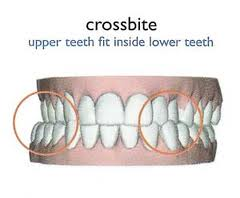 Having a perfect smile can not only increase your self-esteem, but it can also help you have a more positive outlook on life in general. Nowadays, there are countless dental procedures that have been developed, so no matter what type of dental condition you have, there is almost certainly a dentist out there who can address your issue and help you achieve that perfect smile that you’ve always dreamed of. No matter whether you are missing teeth or have a crossbite, there are dental technologies on the market that can be used to help solve your dental issue and perfect your smile.
Having a perfect smile can not only increase your self-esteem, but it can also help you have a more positive outlook on life in general. Nowadays, there are countless dental procedures that have been developed, so no matter what type of dental condition you have, there is almost certainly a dentist out there who can address your issue and help you achieve that perfect smile that you’ve always dreamed of. No matter whether you are missing teeth or have a crossbite, there are dental technologies on the market that can be used to help solve your dental issue and perfect your smile.
What is a Crossbite?
Basically, a crossbite is when one or more of a person’s teeth line up either behind or inside the corresponding lower or upper teeth. There are numerous types of crossbites, some of which are more severe than others. Crossbites can affect the teeth found in the front of the mouth or the teeth in the back of the mouth. The upper and lower sets of teeth are supposed to align in a certain manner, and when they fail to do so and misalign when an individual bites down, then that individual is usually said to have a crossbite.
Problems Caused by a Crossbite
Crossbites can cause individuals to suffer from numerous dental problems. Perhaps one of the most common problems caused by crossbites in the back of the mouth that are left untreated include significant tooth wear on the back teeth and, more seriously, improper jaw growth. When the crossbite affects the front teeth, it increases the risk of those front teeth becoming damaged in an accident since those teeth are not in their normal safe position. Of course, as with the back teeth, a crossbite affecting the front teeth can also contribute to significant tooth erosion and wear as well.
What Causes a Crossbite
Perhaps the most common cause for a crossbite is genetics. If one or both of your parents have or had a crossbite, then you are much more likely to inherit that trait than others who parents didn’t have one. However, certain habits can also contribute to the formation of a crossbite, some of which include finger and thumb sucking and breathing through the mouth instead of breathing through the nostrils. Additionally, crossbites most commonly start to appear in children, and part of the reason for this is because many children start to develop crossbites when they don’t lose their baby teeth in a timely manner. Children whose baby teeth don’t fall out on schedule develop problems when their permanent teeth begin to come in and have nowhere to grow in except behind the baby teeth, which places them in the wrong position. Dentists usually recommend that parents begin seeking treatment for crossbites as soon as possible to prevent the conditions from worsening and the teeth from becoming damaged due to the condition. The sooner the condition is addressed, the healthier the teeth will be in the long-run and the less the condition will be allowed to progress.
Treatment for a Crossbite
The specific type of treatment that each individual needs for his or her crossbite depends upon that individual’s specific dental circumstances. For instance, whereas some crossbites might be able to be treated by simply wearing a retainer for a few months or years, other crossbite situations might be so progressed that they can’t be properly treated without affixing braces to the individual’s teeth. One of the most common types of dental appliances used to correct a crossbite is a dental expander. The expander is gradually widedned throughout the first couple of months that it’s worn to help expand the jaw, and then the last three months that its worn, the expander is kept in the position the jaw needs to be in so that the jaw will harden into place and fix the crossbite issue. Many people who suffer from crossbites find that they have to have their jaws expanded before they can have braces put on their teeth to further address their crossbite issues.
References:
American Academy of Pediatric Dentistry.”Correcton of posterior crossbite: Diagnosis and treatment. ” Retrieved on April 19, 2016, from http://www.aapd.org/assets/1/25/Binder-26-03.pdf.
WedMD. “Types of malocclusion.” Retrieved on April 19, 2016, from http://www.webmd.com/oral-health/tc/types-of-malocclusion-topic-overview.
American Academy of Pediatric Dentistry
211 East Chicago Ave.
Suite 1600
Chicago, IL 60611-2637
312-337-2169
www.aapd.org
WebMD
395 Hudson St.
3rd Floor
New York, NY 10014
212-624-3700
www.webmd.com
Images:
http://www.intelligentdental.com/wp-content/uploads/2012/04/untitled15.png
http://www.hamiltonorthodontics.co.nz/images/common_presentations/crossbite3.jpg